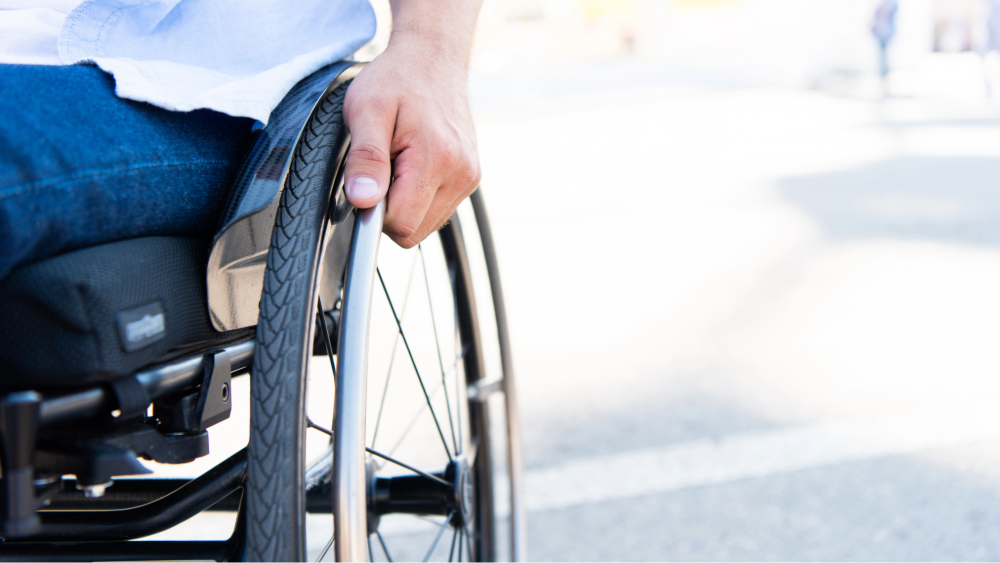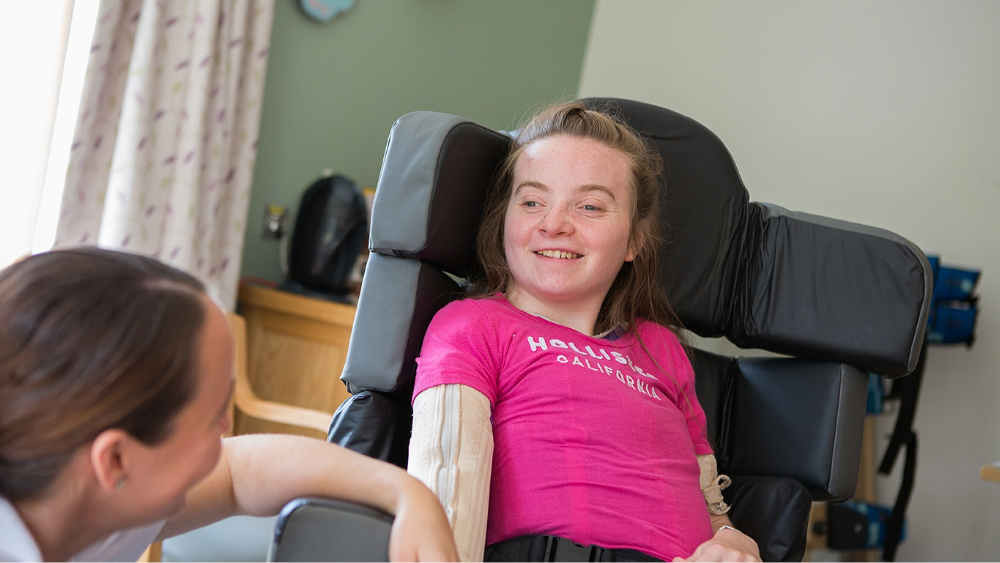There are an estimated 1.2 million people in the UK who use a wheelchair.1 A wheelchair is ultimately a mobility aid, a piece of equipment to move someone from A to B. However, many people depend on their wheelchairs as their only means of mobility, so they spend far longer sitting in them than just when they are mobile. Within wheelchair services, it is commonplace to assess people who routinely sit in their wheelchair all day, some for up to 16 hours, purely because they have no other place to sit or means of changing seats.
Correct postural support in sitting, whether in a wheelchair or other seat, is fundamental for many people in safeguarding their body shape and preventing the development of secondary complications such as tissue damage, muscle contractures, pain and discomfort, constipation and respiratory or urinary infections.2 The effects of gravity causing distortion and asymmetry can be devastating for people who require support to maintain postural alignment, affecting bodily functions and risking the development of pressure ulcers. This can have a knock-on effect on the level of care needed to support them, meaning that more specialist equipment or a larger care package is required.
Wheelchair services are commissioned to provide for mobility and posture within a wheelchair, but Therapists’ hands are tied when considering seating outside of the wheelchair; meaning that despite having their seating requirements assessed, individuals who need postural supports in seating outside of a wheelchair or who do not meet the criteria for a wheelchair, often have unmet needs due to inadequate service provision for specialist seating.3 This could be an explanation for over-use of wheelchairs when postural static seating may be more appropriate as these needs have often been met through wheelchair provision, leading to misuse of the wheelchair service to provide postural seating when there is no requirement for mobility.4 When considering postural seating requirements, it is important to remember that “a wheelchair is part of the solution, but not the whole solution”5 and that postural support achieved within a wheelchair can be different to a static armchair and vice versa.
Whilst blogging her journey as a wheelchair user, Jess Thom6 likens her different wheelchairs to different pairs of shoes as they each have different functions. This analogy can be extended to understand the role of all seating. In the same way that a person might wear wellie boots for going out in wet weather, heels for dancing and slippers for being cosy and relaxing, an individual may require a wheelchair for mobility, a postural armchair for stability, support and pressure relief or a beanbag for comfort and relaxation.
Think about the different places you sit in a 24-hour period and the different positions your body adopts throughout that time. You may sit upright on an office chair at the computer, slouch and lounge on a sofa to watch TV or use a reclined chair for gaming. The same can be said for anyone requiring specialist postural support. We have already considered the risks of sitting unsupported and how that can have a detrimental effect on health and well-being, and so too can having insufficient seating for the different tasks required in one’s life.
If an individual is unable to maintain sitting balance and is not supported to do so, they will either waste their energy attempting to maintain their position because “postural stability is a fundamental necessity for effective functional performance”7, or be unable to engage in activities or with people around them at all because “seating posture and task performance are interrelated”.8 This can have a detrimental effect not only on the individuals’ posture but also their general health and wellbeing as they are less able to participate in daily life. It can also lead to others wrongly assuming the individual is less able to participate and therefore not engaging with them.9 Whereas, appropriate posturally supportive seating can present opportunities to the individual for interaction with people and the world around them.10 Failure to provide appropriate wheelchair seating and static seating leads to individuals being unable to reach their occupational potential and often not able to participate in life as an equal citizen.11
Occupational Therapists and Physiotherapists within wheelchair services have the specialist skills and experience required for assessment and prescription of appropriate seating.12 However, they are limited as wheelchair services are commissioned only to provide wheelchairs and static seating either has no provision or limited provision via social services, where the therapists’ may not have the specialist postural skills of a wheelchair therapist. It would seem that expanding wheelchair services to include provision for postural static seating also, could be an ideal opportunity to provide this much needed service and has begun to be recognised. For example, the contract for Eastbourne Wheelchair Service, included in the service specification a requirement to assess for and provide postural static seating in addition to wheelchairs and associated postural accessories.13
Many wheelchair therapists may not feel confident branching out into static seating prescription despite having specialist skills in assessing seated posture. The CareFlex Encyclopedia of Specialist Seating provides a comprehensive guide for professionals who assess for specialist seating. It will give professionals the knowledge needed to advocate on behalf of those who need it, and it is written by our Clinical Specialist, Rebecca Dunstall. We also offer free training and catch up webinars to accompany the Encyclopedia. CareFlex training events are free to attend and qualify as part of a Clinician’s CPD, with them receiving a certificate of attendance and a learning pack. Training events are always a combination of theory and practical hands-on sessions. They are packed with useful hints and tips emphasising the importance of specialist seating in improving individuals’ quality of life.
Written by our guest blogger, Lauren Osborne, an Independent Posture & Wheelchair Specialist Occupational Therapist.
References
- Disability Sport (2014) Facts and Figures about Disabled People in the UK [Online]https://www.disabilitysport.org.uk/facts-and-figures-about-disabled-people-in-the-uk.html
- Pope, P. M. (2007) Severe and complex neurological disability: management of the physical condition. Edinburgh: Butterworth-Heinemann/Elsevier.
- Osborne, L.J., Gowran, R.J. and Casey, J. (2023) ‘Evidence for 24-hour posture management: A scoping review’, The British journal of occupational therapy, 86(3), pp. 176–187.
- Collins, F. (2001) ‘An adequate service? Specialist seating provision in the UK’, Journal of Wound Care, 10(8), pp. 333-337.
- Changing our Lives (2018) Postural Care Strategy. Changing Our Lives; Registered Charity.
- Touretteshero (2023) Wheelchair Love UK – Early Day Essentials [Online] https://www.touretteshero.com/2023/02/15/wheelchair-love-uk-early-day-essentials/
- Agustsson, A. and Jonsdottir, G. (2018) ‘Posture Management 24/7’, in Lange, M.L. & Minkel, J.L. (eds.) Seating and Wheeled Mobility: A Clinical Resource Guide: SLACK Incorporated.
- Cooper, R. A. (1998) Wheelchair Selection and Configuration. Springer Publishing Company. Springer Demos Medic Series.
- Gavin-Dreschnack, D. (2004) ‘Effects of wheelchair posture on patient safety’, Rehabilitation nursing: the official journal of the Association of Rehabilitation Nurses, 29(6), pp. 221-6.
- Reid, D., Brault, R. and Croteau, D. (2009) ‘Design and development of the two-plane seating concept to enable quality of sitting posture and enhanced occupational performance’, Technology and Disability, 21(4), pp. 149-158.
- Gowran, R. (2013) ‘Sustainable solutions for wheelchair and seating assistive technology provision: presenting a cosmopolitan narrative with rich pictures’, in Encarnação , P., Azevedo , L. & Gelderblom, G.J. (eds.) Assistive Technology: From Research to Practice: IOS Press.
- Collins, F. (2006) ‘Wanted! Expert clinical advice on seating’, Journal of wound care, 15(6), pp. 229.
- NHS High Weald Lewes Havens CCG, NHS Eastbourne Hailsham and Seaford CCG, NHS Hastings and Rother CCG (2019) Invitation to Tender for East Sussex Children and Adult Wheelchair and Specialist Seating Service. NHS Standard Contract Team Service Specification.



